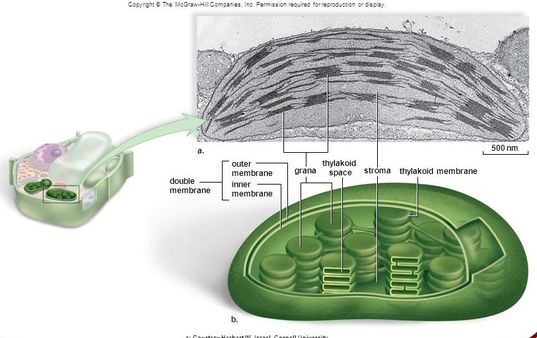- IB Style Question Banks with Solution
- IB DP Biology SL- IB Style Practice Questions with Answer-Topic Wise-Paper 1
- IB DP Biology HL- IB Style Practice Questions with Answer-Topic Wise-Paper 1
- IB DP Biology SL- IB Style Practice Questions with Answer-Topic Wise-Paper 2
- IB DP Biology HL- IB Style Practice Questions with Answer-Topic Wise-Paper 2
8.3 Photosynthesis
Essential Idea:
Light energy is converted into chemical energy
Understandings:
- Light-dependent reactions take place in the intermembrane space of the thylakoids
- Light-independent reactions take place in the stroma
- Reduced NADP and ATP are produced in the light-dependent reactions
- Absorption of light by photosystems generates excited electrons
- Photolysis of water generates electrons for use in the light-dependent reactions
- Transfer of excited electrons occurs between carriers in thylakoid membranes
- Excited electrons from Photosystem II are used to contribute to generate a proton gradient
- ATP synthase in thylakoids generates ATP using the proton gradient
- Excited electrons from Photosystem I are used to reduce NADP
- In the light-independent reactions a carboxylase catalyses the carboxylation of ribulose bisphosphate
- Glycerate-3-phosphate is reduced to triose phosphate using reduced NADP and ATP
- Triose phosphate is used to regenerate RuBP and produce carbohydrates
- Ribulose bisphosphate is reformed using ATP
- The structure of the chloroplast is adapted to its function in photosynthesis
Application:
- Calvin’s experiment to elucidate the carboxylation of RuBP
Skill:
- Annotation of a diagram to indicate the adaptations of a chloroplast to its function
- State the location of the light dependent reactions of photosynthesis.
- State that the light dependent reactions of photosynthesis include:
- Photoactivation
- Photolysis
- Electron transport
- Chemiosmosis
- ATP synthesis
- Reduction of NADP to NADPH + H+
- State that the light dependent reactions convert light energy into chemical energy in the form of ATP and NADH.
- State the location of the light independent reactions of photosynthesis.
- State that the light independent reactions of photosynthesis include:
- Carbon fixation
- Carboxylation of RuBP
- Production of triosphosphate
- ATP and NADPH as energy sources
- ATP used to regenerate RuBP
- ATP used to produce carbohydrates
- Define photosystem and reaction center.
- State that the light dependent reactions of photosynthesis begin at Photosystem II.
- Outline process of photoactivation of the reaction center chlorophyll.
- State that in photoactivation at Photosystem II, the reaction center chlorophyll is oxidized and the plastoquinone (Pq) is reduced.
- State that to replace the electrons lost during photoactivation, the reaction center chlorophyll takes electrons by splitting water.
- Draw a cross section of the thylakoid membrane to show the path of transfer of excited electrons, inclusive of Photosystem II, ATP synthase, an electron transport chain (with Pq first) and Photosystem II.
- State that electrons pass from plastoquinone (Pq) through a chain of electron carrier molecules.
- State that the energy released by the movement of electrons is used to pump protons across the thylakoid membrane, from the stroma into the thylakoid lumen.
- State that the result of the electron transport chain is a proton gradient, with a high concentration of protons in the thylakoid lumen.
- State that in chemiosmosis, ATP is generated as protons move down their concentration gradient through ATP synthase.
- State that photoactivation of the reaction center chlorophyll in photosystem I excites electrons which pass through a different electron transport chain.
- State that the electrons of Photosystem I are used to reduce NADP+ to form NADPH.
- State that NADPH is an electron carrier molecule.
- State that the electrons from the Photosystem II electron transport chain are used to replace the electrons lost during photoactivation of Photosystem I.
- Define carbon fixation and carboxylation.
- State that carbon fixation occurs in the chloroplast stroma.
- State that the 5-carbon molecule ribulose bisphosphate (RuBP) is carboxylated by CO2, forming 2 3-carbon molecules called glycerate-3-phosphate (G3P).
- State that the enzyme that catalyzes the carboxylation of RuBP is called ribulose bisphosphate carboxylase (rubisco).
- State that ATP (from the light dependent reaction) provides the energy for NADPH (from the light dependent reaction) to reduce G3P, forming a three carbon carbohydrate, triose phosphate.
- State that in the Calvin Cycle, triose phosphate is used to regenerate RuBP and create glucose.
- State that six turns of the Calvin Cycle are needs to produce one molecule of glucose.
- State that ATP is used to regenerate RuBP from triose phosphate.
- Outline how chloroplast structure could evolve through natural selection.
- State evidence that suggests chloroplast were once free living prokaryotes.
- Outline Calvin’s “lollipop” experiment, including the role of:
- Radioactive carbon-14
- Green algae
- Air with CO2
- Light
- Varying the time of light exposure
- Heated alcohol
- Chromatography
- Autoradiography
- Draw and label a diagram of the chloroplast.
- State the function of the following chloroplast structures: double membrane, thylakoids, pigment molecules, thylakoid lumen, and stroma.
- State that the discovery of the radioactive 14C isotope allowed Calvin to determine the pathway of the light independent reactions of photosynthesis.
Topic 8.3: Photosynthesis
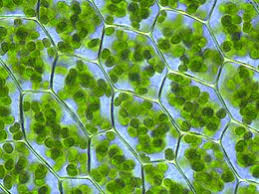
In the Photosynthesis unit we will expand our knowledge from Topic 2.9. We will explore the structure of the chloroplast and identify how it is adapted to absorb light energy. We will also identify specific metabolic pathways of the light dependent and light independent reactions
This unit will last 5 school days
Essential idea:
- Light energy is converted into chemical energy.
Nature of science:
- Developments in scientific research follow improvements in apparatus—sources of 14C and autoradiography enabled Calvin to elucidate the pathways of carbon fixation. (1.8)

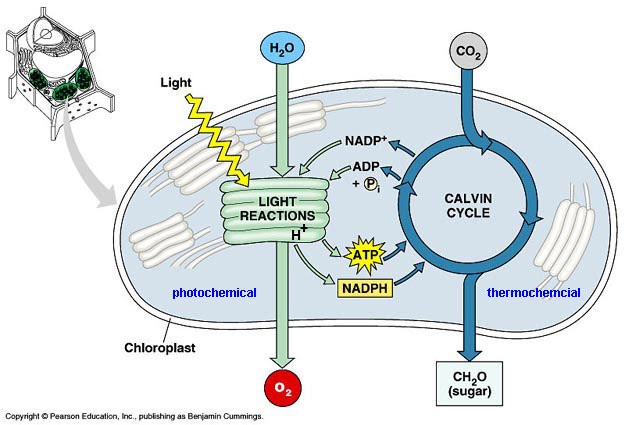
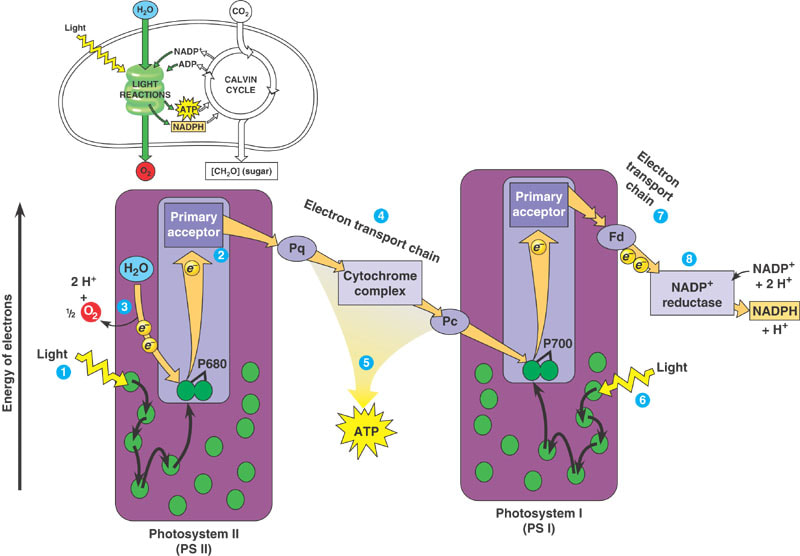
The light-independent reactions use the products produced by the light dependent reactions and CO2 to produce glucose.
- The stroma contains enzymes necessary for the light-independent reactions (Calvin Cycle)
- 6 CO2 are required to create one 6 carbon sugar molecule.
- ATP and hydrogen / electrons (carried by NADPH) are transferred to the site of the light independent reactions
- The hydrogen / electrons are combined with carbon dioxide to form complex organic compounds (e.g. carbohydrates)
- The ATP provides the required energy to power these anabolic reactions and fix the carbon molecules together
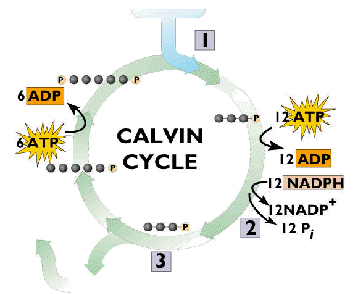
This process is the first stage of photosynthesis in which light energy is converted into chemical energy (NADPH and ATP). These products will be used in the light independent stage.non-cyclic photophosphorylation:
- Non-cyclic photophosphorylation involves two photosystems (PS I and PS II) and does involve the reduction of NADP+
- one-way flow of 2 e-s from water to PsII to ETS to PsI to NADP+
- 2 main products: 1(NADPH + H+ 2) ATP
cyclic photophosphorylation:
- involves the use of only one photosystem (PS I) and does not involve the reduction of NADP+cyclic flow of e-s from PsI to ETS back to PsI
- 1 main product: ATP
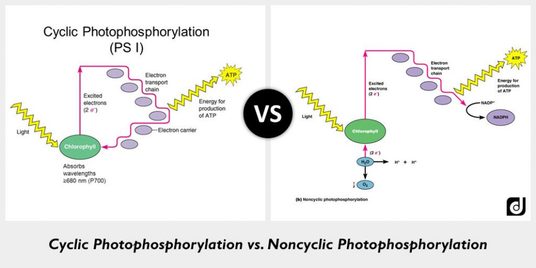
- Chlorophyll molecules are grouped together into photosystems contained within the thylakoid membranes.
- Chlorophyll a within the photosystem II (PS II) absorbs a photon of light (most efficient at 680 nm).
- This photon of light excites an electron from the chlorophyll a molecule to a higher energy state.
- The chlorophyll is now in a photoactivated state.
- The excited electron is released by the oxidized Chlorophyll a molecule to the primary electron acceptor in photosystem II.
- This electron acceptor is called plastoquinone (PQ)
- PQ accepts two exited electrons and transfers these electrons along a series of electron carriers in the thylakoid membrane
- Photosystem II can repeat this process to produce a second reduced PQ molecule (total of 4e- are used to produce 2 reduced PQ molecules)
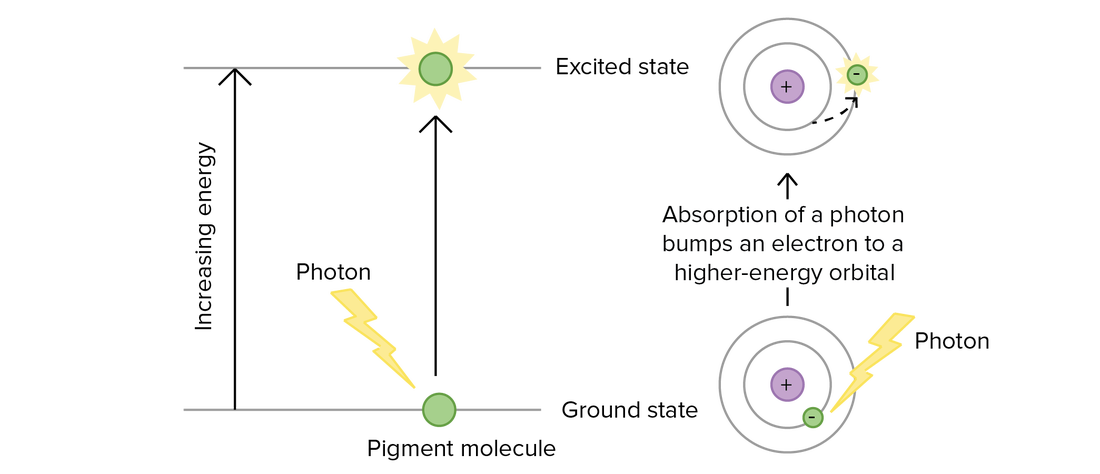
The lost electrons are replaced by the splitting of water through a process called photolysis. During this reaction oxygen is produced and released as a by-product.
- oxidized chlorophyll a (chl+) has a lack of electrons
- replaced as H2O is split: H2O —-> 2 H+ + 2 e-s + 1/2 O2 c. H+:
- remain in thylakoid interior, lowering pH
- contributing to chemiosmotic gradient
- used in phosphorylation of ATP
- 2 electrons: replace electrons lost by chlorophyll a to ETS: chl a+ + 2 e-s —-> chl a
- 1/2 O2: lost to environment as a waste product

The electron moves along a series of electron carriers through a series of redox reactions from photosystem II (PSII) to photosystem I (PSI)
- Electron Carriers: (plastoquinone (PQ) –> cytochrome complex b6f –> lastocyanin –> PS I).
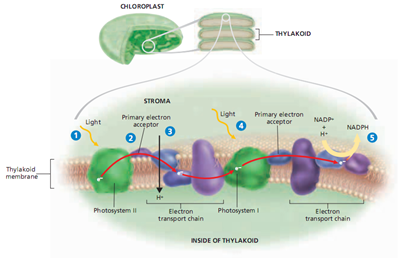
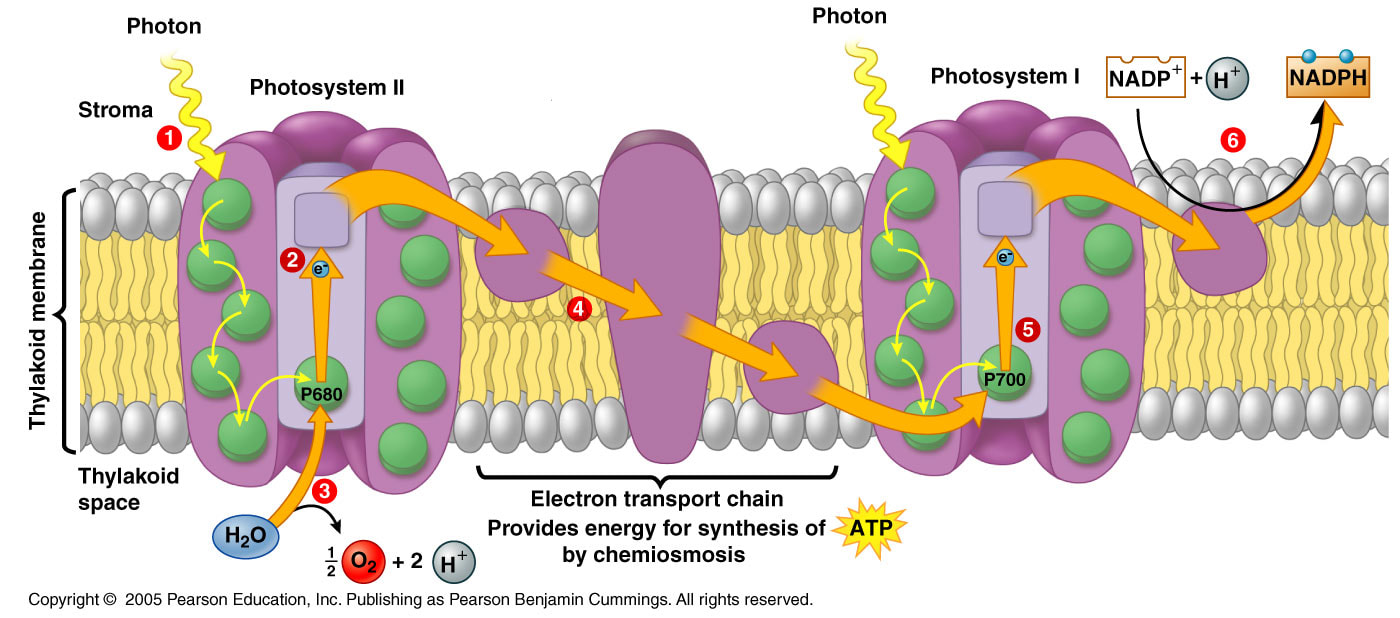
The production of ATP from ADP and phosphate using energy derived from light is called photophosphorylation.. Photophosphorylation occurs on the thylakoid membrane of the chloroplasts.
- As electrons pass along the electron transport chain between PS II and PS I, the electrons release energy that is used to pump protons from the stroma into the thylakoid space.
- This builds up the concentration of H+ within the thylakoid space creating a proton concentration gradient.
- Protons will flow across the membrane from the thylakoid space to the stroma, through ATP synthase following the concentration gradient.
- As the protons flow through ATP synthase, the energy released from the flow of protons is used to combine ADP and inorganic phosphate to form ATP(photophosphorylation).
- This whole process of producing ATP is called chemiosmosis.
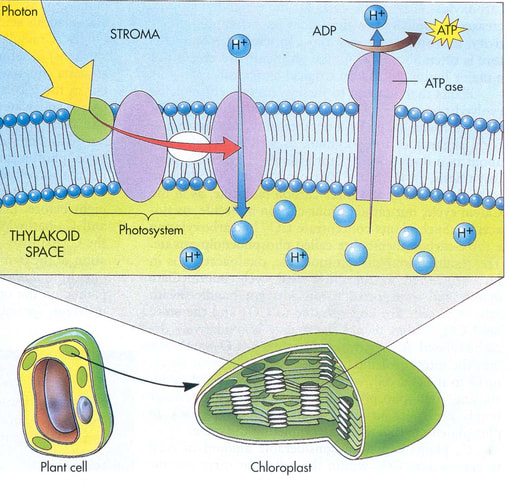
- A photon of light strikes photosystem I, re-exciting the electron to a higher energy state (photoactivation)
- This electron is passed along a second electron transport chain (includes ferredoxin) until it is accepted by the final electron carrier NADP+.
- A second electron that follows the same path is also accepted by NADP+.
- These electrons reduce NADP+ to form NADPH (NADP+ + 2e- + H+ –> NADPH).
- This reaction is catalyzed by an enzyme called NADP reductase
- Since the electrons are not returned to photosystem II, this path for making ATP is called non-cyclic photophosphorylation.
- New electrons are passed to PSI from PSII through a carrier called plastocyanin
- If NADP+ runs out and it cannot accept the excited electron from photosystem I, electrons return to the electron transport chain (PQ) where they can reflow back to PS I thus pumping more protons into the thylakoid space; producing more ATP.
- This is called cyclic photophosphorylation.
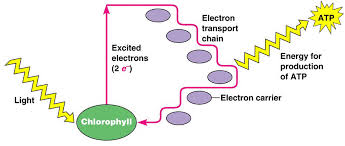
The light independent reactions use the chemical energy derived from light dependent reactions to form organic molecules
- One CO2 molecule enters the Calvin cycle and combines with a 5 carbon molecule called Ribulose bisphosphate (RuBP) to temporarily form a 6C molecule.
- This reaction is catalyzed by the enzyme RuBP carboxylase (rubisco).
- This immediately breaks down into two 3C molecules called glycerate-3-phosphate (GP).
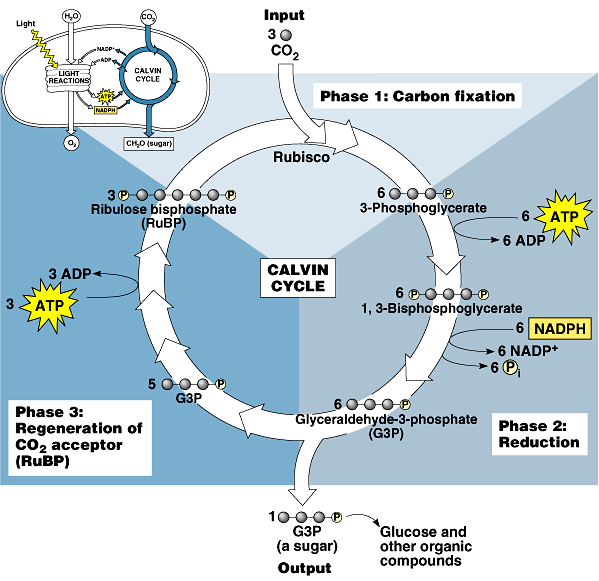
synthesis of carbohydrates and other products:
- enzymes convert TP to various products
- other products: lipids, amino acids, nucleic acids
- polysaccharides: starch
- disaccharides: sucrose
- monosaccharides: glucose, fructose
Two TP molecules are used to produce one six carbon glucose phosphate molecule, which can eventually be combined with other glucose phosphate to form starch.
- The other ten TP (3C) molecules are used to regenerate six RuBP (5C) using 6 ATP molecules for energy.
- So for every 6 triose phosphate molecules produced, 5 of these triose (3C) sugars are used to reform 3 RuBP (5C) molecules using 3 ATP molecules The one remaining triose phosphate forms half a glucose phosphate
- chloroplast has double membrane regulating internal conditions
- chloroplast interior separated into thylakoids and stroma
- thylakoids = site of light dependent reactions
- large surface area to maximize light absorption
- small space inside thylakoids allows for proton accumulation
- thylakoid interior acidic/ pH = 4/ high proton concentration allowing for chemiosmotic gradient
- stroma = site of light independent reactions
- stroma pH = 8/ basic where Calvin cycle enzymes function optimally
- thylakoids = site of light dependent reactions
- thylakoid membranes hold photosystem pigments
- pigments anchor in thylakoid membranes by hydrophobic/ hydrocarbon tails
- photolysis enzymes on inner surface of thylakoid membrane for splitting water into oxygen and hydrogen
- intrinsic proteins bound in thylakoid membranes allow electron transport/ ETC between PsII and PsI
- ETC proteins between photosystems II and I pump protons into thylakoid interior adding to chemiosmotic gradient
- NADP reductase bound to outer thylakoid membrane allowing reduction of NADP to NADPH for Calvin cycle
- ATP synthase transmembrane complex bound across thylakoid membrane
- allowing proton flow down chemiosmotic gradient/ photophosphorylation/ ATP production in stroma
- chloroplast DNA allows for protein synthesis
- chloroplast ribosomes allow for protein synthesis
- chloroplast starch granules allow for storage of photosynthetic products
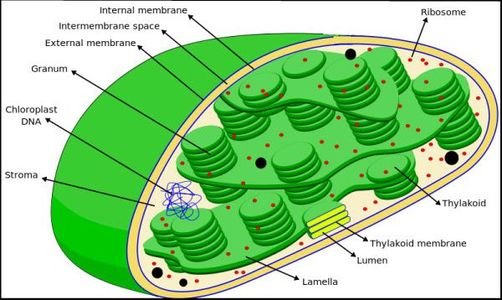
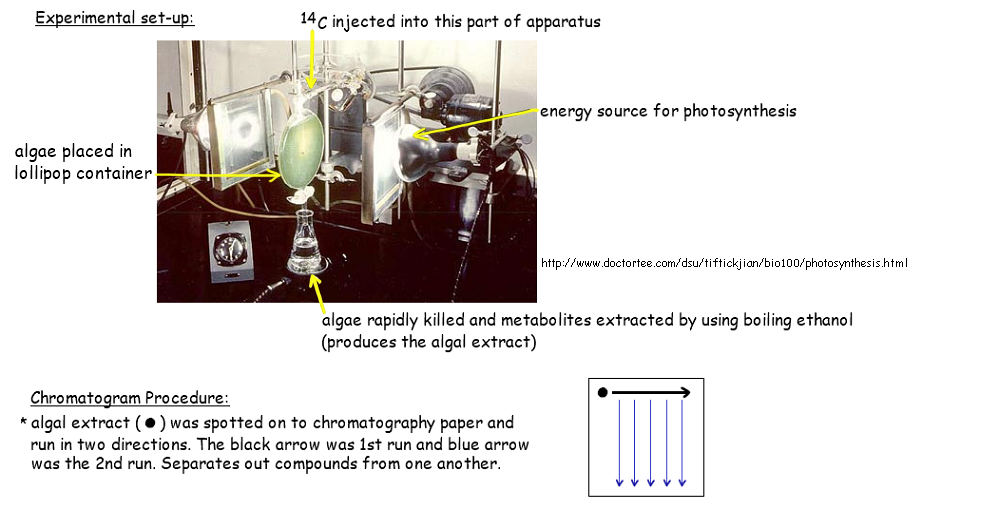
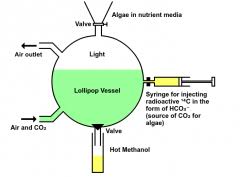
Typically, chloroplast diagrams should display the following features:
- Usually round in appearance with a double membrane exterior
- Flattened discs (thylakoids) arranged into stacks (grana), connected by lamellae
- Internal lumen of thylakoids is very small (allows for a more rapid generation of a proton motive force)
- Ribosomes and chloroplast DNA are usually not visible at standard resolutions and magnifications
- Starch granules may be visible and will appear as dark spots within the chloroplast
